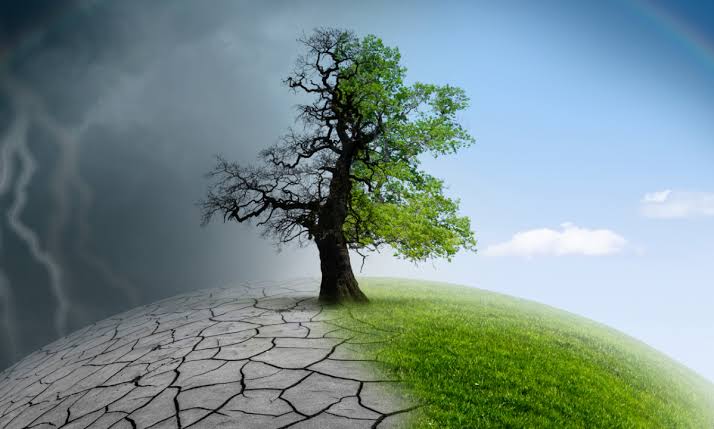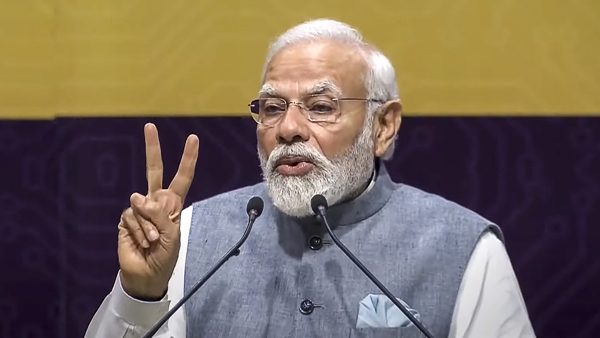The Indian government remains steadfast in its commitment to addressing climate change and environmental conservation through a range of legislative, regulatory, and administrative measures. The Ministry of Environment, Forest & Climate Change (MoEFCC) has been leading efforts to implement policies and programs that focus on the protection of the environment, conservation of forests, and pollution control.
 One of the key initiatives in this regard is the National Clean Air Programme (NCAP), launched in 2019, which aims to improve air quality in 130 cities across 24 states and union territories. By 2025-26, the program targets a 40% reduction in particulate matter from 2017-18 levels. To facilitate real-time air quality monitoring, the government has introduced the ‘PRANA’ portal. Another significant step is the regulatory framework for a Circular Economy, mandating producers to recycle end-of-life waste under Extended Producer Responsibility (EPR) rules. These regulations cover plastic, battery, tyre, e-waste, and used oil waste, ensuring a sustainable waste management system.
One of the key initiatives in this regard is the National Clean Air Programme (NCAP), launched in 2019, which aims to improve air quality in 130 cities across 24 states and union territories. By 2025-26, the program targets a 40% reduction in particulate matter from 2017-18 levels. To facilitate real-time air quality monitoring, the government has introduced the ‘PRANA’ portal. Another significant step is the regulatory framework for a Circular Economy, mandating producers to recycle end-of-life waste under Extended Producer Responsibility (EPR) rules. These regulations cover plastic, battery, tyre, e-waste, and used oil waste, ensuring a sustainable waste management system.
Recognizing the critical role of coastal ecosystems, the government launched the ‘Mangrove Initiative for Shoreline Habitats & Tangible Incomes’ (MISHTI) in June 2024. This initiative focuses on restoring and protecting mangrove forests along India’s coastlines. So far, 22,561 hectares of degraded mangroves have been revived, with further afforestation efforts underway. Similarly, the Nagar Van Yojana, implemented by the National Afforestation and Eco-development Board, aims to establish 600 urban forests and 400 city gardens by 2026-27, improving green cover and biodiversity in urban areas.
India has also made notable strides in promoting sustainable living through the Mission LiFE (Lifestyle for Environment) initiative, launched in 2022. Encouraging eco-conscious consumption, this initiative emphasizes water conservation, energy efficiency, waste reduction, and the elimination of single-use plastics. In line with this, the MoEFCC introduced Eco-mark Rules in September 2024, which promote environmentally friendly products and ensure transparency in eco-labeling. Further strengthening the movement for a greener future, Prime Minister Narendra Modi launched the ‘Ek Ped Maa Ke Naam’ campaign on World Environment Day 2024, urging citizens to plant trees in honor of their mothers and Mother Earth. With a target of 140 crore trees by March 2025, the initiative has already seen 109 crore saplings planted as of January 2025.
India’s conservation efforts have also seen remarkable progress. The number of Protected Areas has risen from 745 in 2014 to 1,022, covering 5.43% of the country’s geographic area. Community Reserves have grown significantly, from just 43 in 2014 to 220 today. The country now boasts 57 Tiger Reserves and 33 Elephant Reserves, ensuring the protection of these iconic species. India has also expanded its network of Ramsar wetlands, with 59 new sites added since 2014, bringing the total to 89, making it the largest in Asia and third-largest globally.
The government’s long-term climate strategy is aligned with its updated Nationally Determined Contributions (NDCs), aiming for net-zero emissions by 2070. Through the National Action Plan on Climate Change (NAPCC), various missions focus on solar energy, energy efficiency, water conservation, Himalayan ecosystem preservation, and sustainable agriculture. As a result of these measures, India has successfully reduced its emissions intensity by 36% between 2005 and 2020. By October 2024, non-fossil energy sources accounted for 46.52% of India’s installed electricity capacity, with renewable power capacity growing 4.5 times in the last decade.
Despite its historically low contribution to global carbon emissions, India has demonstrated remarkable leadership in climate action. By integrating sustainability into economic growth, the country continues to balance development with environmental responsibility, upholding its commitments under the United Nations Framework Convention on Climate Change (UNFCCC) and the Paris agreement.




